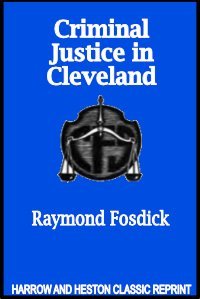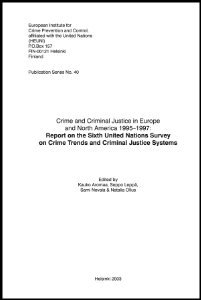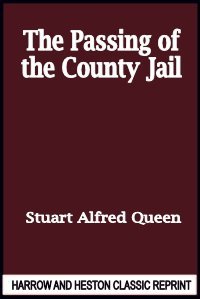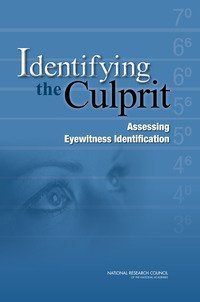Ray Madding McConnell.
“ Among the most expensive functions of government is that which is concerned with the detection, arrest, trial, and punishment of criminals. The expenditures in connection with police, courts, and prisons exceed in amount the outlay for the conservation and improvement of health, the necessities and conveniences of travel and intercourse, highways, parks, and playgrounds, and about equal the costs of education. When any one begins to philosophize about the raison d'etre of this enormously expensive arrangement for dealing with crime and criminals, he naturally asks first for its purpose, What is the object of it all? What kind of return does this investment bring in?”
NY. Charles Scribner’s (1912) 337 pages.
Edited by Kauko Aromaa, Seppo Leppä, Sami Nevala and Natalia Ollus.
The current report is the result of an innovative analysis of national responses to the Sixth United Nations Survey of Crime Trends and Operations of the Criminal Justice Systems (1995-1997). Responses to the Sixth United Nations Survey were received from most of the European region member states. Corresponding data from the United States and Canada were secured through other channels. The analysis has been carried out by an international working group. The group has, in addition to the United Nations Survey responses, had access to large amounts of other data, in particular the data emerging from the International Crime Victim Survey.
Helsinki: European Institute for Crime Prevention and Control (HEUNI), 2003. 237p.
Edited by Richard F. Wetzell.
”There is a notable asymmetry between the early modern and modern German historiographies of crime and criminal justice. Whereas most early modern studies have focused on the criminals themselves, their socioeconomic situations, and the meanings of crime in a particular urban or rural milieu, late modern studies have tended to focus on penal institutions and the discourses of prison reformers, criminal law reformers, criminologists, and psychiatrists.”
Open Access Book (2018) 325p.
By Sigrid Geralde Clara van Wingerden.
The sentencing decision of the judge might be the most important decision in the criminal proceedings, not only because of the impact the punishment has on the offender, but also because the sentencing decision is a cornerstone of the legitimacy of the entire criminal justice system. Nonetheless, there still are questions about the factors judges take into account when making their sentencing decision. This study aims to improve our understanding of the sentencing decisions judges make.The developments in criminal justice practices as regards the emergence of ‘actuarial justice' have directed the focus of this study to risk-based sentencing: are offenders with a high risk of reoffending more likely to be sentenced to imprisonment and to longer prison terms than low-risk offenders? To what extent do judges take information into account on the risk-related personal characteristics of the offender, such as unemployment, ties to family or friends, or drug usage, when making their sentencing decision?Using uniquely detailed data on risk-related social circumstances of the offender, and advanced quantitative and qualitative research methods, this study provides in-depth insight into sentencing.
Leiden: Leiden University, 2014. 215p.
By Alfred Trumble, editor of “the collector”.
“…Charles Dickens had a deep and abiding interest in that grim accessory to civilization, the prison. He not only went jail hunting whenever opportunity offered, but made a profound study of the rules, practices and abuses of these institutions. Penology was, in fact, one of his hobbies…These papers, therefore, consist of personal knowledge, as a voluntary visitor, be it understood, of Newgate.”
Harrow and Heston Classic Reprint. London Suckling & Galloway (1896) 107 pages.
By Enrico Ferri. Translated by Edgar Betts.
Report and Preliminary Project for an Italian Penal Code, In both Italian and a rare English translation by Edgar Betts. This “model penal code” as it would be called today, though never adopted by Italy, formed the basis for many penal codes in communist and socialist countries around the world, in particular Cuba. The concepts of criminal intent and criminal responsibility remained (and still do) the devilishly sticky point for this and all criminal codes, especially when faced with the criticisms by social scientists that economic deprivation among many other factors may constitute powerful external “causes” of crime, thus muddying the waters considerably concerning individuals’ responsibility for their criminal acts.
Royal Commission for the Reform of the Penal Statutes. Italy. ca. 1920. 180p.
National Research Council.
Identifying the Culprit: Assessing Eyewitness Identification makes the case that better data collection and research on eyewitness identification, new law enforcement training protocols, standardized procedures for administering line-ups, and improvements in the handling of eyewitness identification in court can increase the chances that accurate identifications are made. This report explains the science that has emerged during the past 30 years on eyewitness identifications and identifies best practices in eyewitness procedures for the law enforcement community and in the presentation of eyewitness evidence in the courtroom. In order to continue the advancement of eyewitness identification research, the report recommends a focused research agenda.
Washington, DC: The National Academies Press. 2014. 170p,










